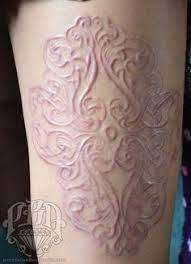
 Please wait...
Please wait...
-
@Everything Ethiopia 1+ years agoEverything there is to Ethiopia from around the web!
The most common type of permanent Body ornamentation throughout Ethiopia is the scarification and tattooing of the skin. Scarification, also known as cicatrization, involves splitting of the skin and allowing new tissue to heal over the open wound. The healing process usually forms a recessive valley on the skin’s surface or a raised bump, depending on the technique employed. Both processes create textured irregularities on the skin’s surface. For incised scars, a sharp thorn or razor is used to lacerate the first few layers of skin. To produce elevated patterns, the skin is cut open and rubbed with ash to create calculated tumors. Among the Na¡atom, Kara and Suri near the Omo river, men and women decorate their torso in curvilinear forms reminiscent of water or horns. Deep horizontal scarring of the forehead is practized by Nuer men and serves to easily identify a Nuer man from his neighbours. Nuer women incise their exposed torso with raised patterns that accentuate and draw attention to their abdomen. Often incised scarification is combined with tattooing practices in order to make the recessive skin more visible.
When tattooing and scarification are combined, the scar becomes more pronounced. Pigment is most commonly placed into cuts made on the face, particularly between the eyebrows and along the cheeks, when a highland boy or girl reaches puberty. These marks can serve both decorative and amulet functions by attracting potential partners while repelling unwanted forces. Women in their teenage years, for example, are believed to be particularly vulnerable to harm due to their heightened state of attractiveness. Further, scaring and tattooing around the eye region is intended to arrest the harmful gaze of the evil eye. The same marks may also be applied at any age among Eastern Cushitic groups to help cure and guard against eye disease. The tattooing process involves the insertion of pigments just below the skin’s surface. In Ethiopia these pigments are usually made of powdered herbs, soot and water mixed into a liquid paste. Tattoos are most commonly applied with thin hollow bamboo applicators. One of the most universally recognized tattooing practices among Semitic- and Cushitic-speaking women is the darkening of the upper gums. In the past, soot and plant extracts were mixed together to create a green-black colour and applied with thorns pricked into the gums. Today, this process is most often performed with modern dyes and needles. While most Gurage, Oromo, and Amhara think of the process today purely as an aesthetic enhancement, hiding the natural pink of the gum and bringing out the white of the teeth, a century ago this practice was associated with healing, initiation and protection from malevolent forces.
Tattooing is most commonly performed on the face during young adulthood to beautify, as medicine, or to assert religious belief. Black lines may be added by Argobba, Afar and Oromo women to the spaces between their eyes, on their cheeks and running along the bridge of their noses in order to lengthen, highlight and beautify their faces and foreheads. In central and northern Ethiopia, the practice of tattooing horizontal lines on the necks of women to aid in alleviating throat conditions like goitre is still practised. It is also common to see Christian crosses tattooed on the forehead, hands or lower arms to show the wearer’s Orthodox faith in the northern highlands. Today, the facial tattoo is gradually being replaced by less permanent pigments like kohl, henna and nail polish.
Source:
Encyclopaedia Aethiopica
 Please wait...
Please wait...
 Loading content ...
Loading content ...
 Loading content ...
Loading content ...
 Please wait...
Please wait...
Similar topics
Similar topics
 Please wait...
Please wait...


